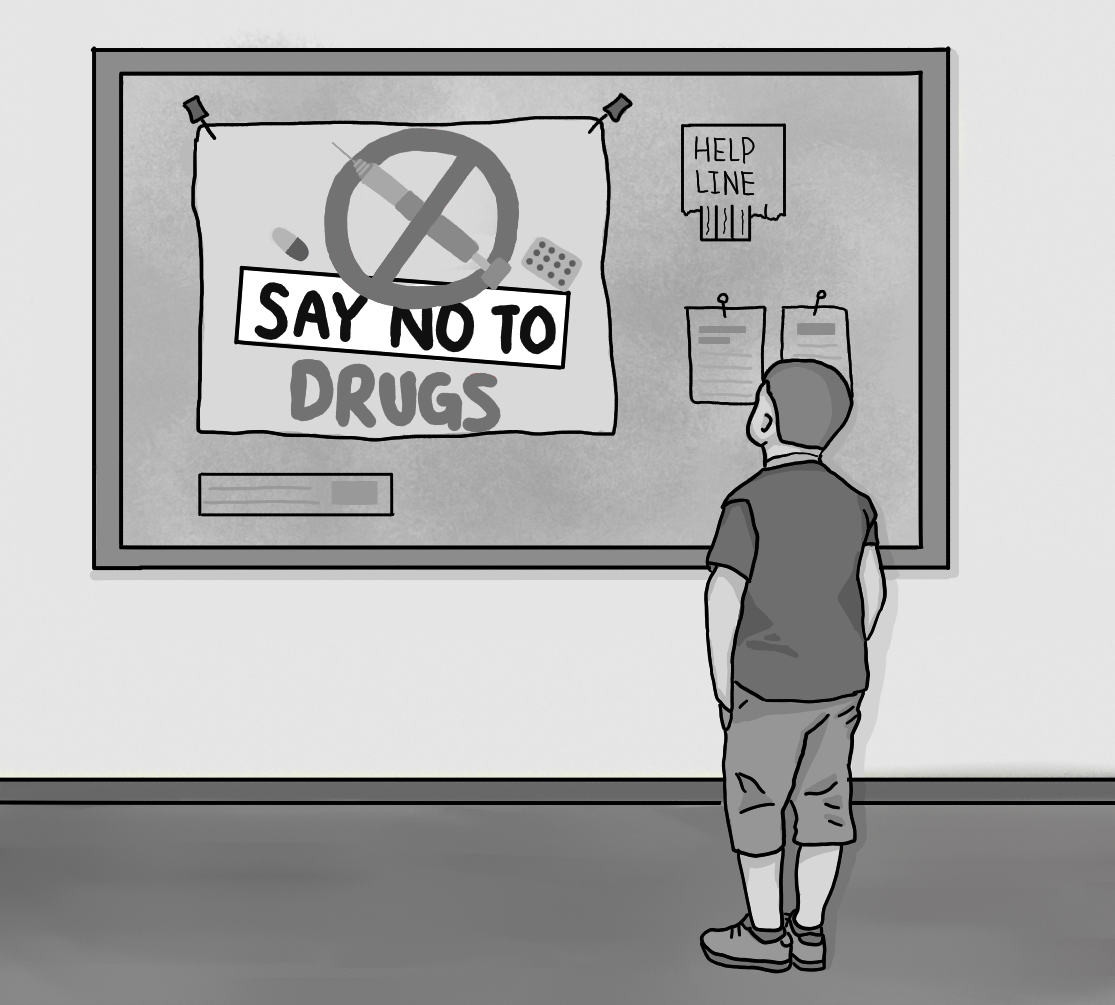When I was in elementary school, our drug education was focused on the potential dangers of cigarettes, drugs and alcohol. Our teachers taught us to avoid it entirely, police officers gave us visuals of drug effects on people and Public Service Announcement posters were plastered with slogans to “Just Say No” to these substances.
According to the National Center for Drug Abuse Statistics, two million children across the United States between the ages of 12 to 17 years old reported using drugs in November of 2024. This is a concerning statistic. Since the start of the rising drug epidemic, children have been exposed to various illicit substances, either as an effect of experimentation, peer pressure or other issues. As the decades passed, many programs were established to combat this crisis, including the Red Ribbon Week organization and the Drug Abuse Resistance Education program.
When it began in 1983, DARE was heralded as a groundbreaking approach by many individuals, including then-President Ronald Reagan. Under his presidency, Reagan escalated Nixon’s War on Drugs, bringing in the efforts of law enforcement and the military to stem the drug trade. First Lady Nancy Reagan brought forth the slogan “Just Say No,” which became much more popular and helped shape DARE’s curriculum.
Despite the praise it initially received, DARE has been wracked with continuous claims of inefficiency and ineffectiveness.
While DARE focused on discouraging students from taking substances, preaching drug abstinence with the help of local law enforcement, there was a large disconnect between its lessons and reality. The crack epidemic of the 1980s in inner-city neighborhoods and rural communities brought financial and mental struggles to families, often leading to crime, gang violence and children in foster care as a consequence. These impacts often brought mental and physical trauma to the youth en masse.
Although children were taught to know that drugs were bad and that they should resist peer pressure, they often found themselves taking substances to stave off pain.
Modern struggles have only continued to persist. New drugs such as fentanyl, opioids, and synthetic drugs have replaced crack cocaine, and they, too, have fallen into the hands of youth. DARE does little to address or inform children about legalized drugs, vaping and mental health struggles. Where other programs teach effective coping mechanisms to tackle familial or mental health issues that could lead to drug usage, DARE does not. Research done by various government agencies has pointed in one direction: that the program just does not work.
In 1995, the California Department of Education published a report on its drug education initiatives. DARE was among one of its biggest. In its findings, they asserted that many of its programs, including DARE, “undermine(d) school personnel’s credibility,” and “(helped) create policies that exclude whom students recognize as most in need of help.” In other words, programs such as DARE alienated students and fed them a biased perspective.
Even when DARE adopted the “Keepin’ it REAL” curriculum in 2009, which sought to decrease lecturing and focus more on the social and psychological aspects of resisting substances, agencies such as the Substance Abuse and Mental Health Services Administration ranked its “readiness for dissemination” at just a 1.5 out of 4.
Although they are well-known for substance abuse, cigarettes, alcohol and drugs are vastly different from each other and leave distinct effects on a person. The curriculum should provide a focus on countering the impacts of each substance on the youth and help them identify the varying narcotics that are on the streets today.
Rather than putting kids through the fear factor, DARE should focus on flexible community engagement programs that are tailored to each region. If schools are in a region that struggles with opioid addiction, education should have an emphasis on those substances, teaching the youth how to respond to it. Further, education must focus on recognizing which drugs are harmful, such as fentanyl, and recreational, like marijuana, and provide a space that allows students to come forward with their struggles.
While attention should still remain on elementary school students, positive reinforcement needs to continue through middle school. Whether through health classes, annual presentations or spirit theme weeks, the goal should be to educate and prevent, not tell and leave. DARE should not be a “one-and-done” ordeal.
In the face of evolution, DARE must adapt to face the unique challenges the modern drug epidemic poses to society. It is time to stop relying on slogans, ceremonies and half-hearted pledges. DARE must be more than that, it must leave a lasting and parting impression on our youth, to consistently remind them that they must DARE to resist drugs and violence.


